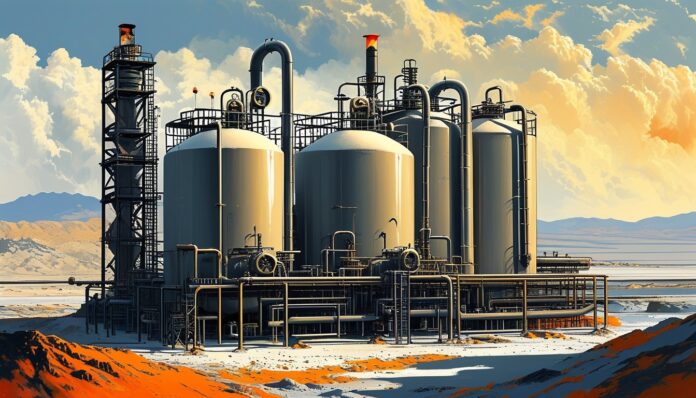In the world of chemical industries, sulfuric acid is often referred to as the “caustic blood” by technologists, engineers, and lab technicians in their slang. It’s known as the “bread” of the global chemical industry because it “feeds” a wide range of economic sectors. Most people remember it from school under the formula H₂SO₄ – a seemingly unremarkable inorganic compound that reacts with other substances. Boring chemistry? Not quite. Here are some fascinating properties of sulfuric acid:
No Pain
For those suffering from high blood pressure (hypertension), gallbladder pain, and during childbirth in gynecology, magnesium sulfate (Epsom salt) injections are administered. This sulfuric acid salt has the property of relaxing blood vessel walls and smooth muscles, which speeds up bile secretion and lowers blood pressure. After a magnesium injection, childbirth becomes easier, alleviating pain for the mother.
Lake of Death
Sulfuric acid is synthesized by nature itself. One of Sicily’s attractions is a lake where H₂SO₄ seeps from the bottom. Why does this happen? The Earth’s crust contains the raw material for synthesis – pyrite. The acid dissolves anything that comes into contact with it. As a result, all living creatures, including plants, avoid the Lake of Death.
Legend has it that this dangerous sulfuric acid reservoir was used by the Sicilian mafia to hide evidence of their criminal activities: they would throw the bodies of their victims into the lake, leaving no bones behind.
Acid Rain
The planet with the beautiful name of Venus (named after the Roman goddess of beauty and love) turns out to be the hottest and most poisonous. The atmospheric temperature (over 400°C) on Venus can melt lead, and its atmosphere is 90% carbon dioxide (CO₂). During storms, CO₂ accumulations turn into H₂SO₄. Therefore, Venus experiences rainfall in the form of sulfuric acid droplets. Not many would want to take a stroll under such rain.
Onion Tears
Why do people cry when chopping onions? It turns out that onions contain a special substance called a lacrimator. When cut, this substance is released, hits the conjunctiva of the eyes, and quickly dissolves in the tear fluid. This chemical reaction produces sulfuric acid, which irritates the mucous membrane.
In fact, this is a sort of defense mechanism for the vegetable: the unpleasant smell and taste repel animals and insects, protecting the onions from being eaten.
Predatory Mollusks
Not only snakes can shoot venom at their prey and paralyze it. Some seemingly clumsy and harmless mollusks, like the deep-sea Dolium – a sea snail with a beautiful shell, hunt sea stars, scallops, and urchins. How do they deal with prey that has a hard, calcareous shell? The mollusk’s corrosive saliva contains sulfuric acid, capable of dissolving the hard skeletal particles to a plaster-like state.
